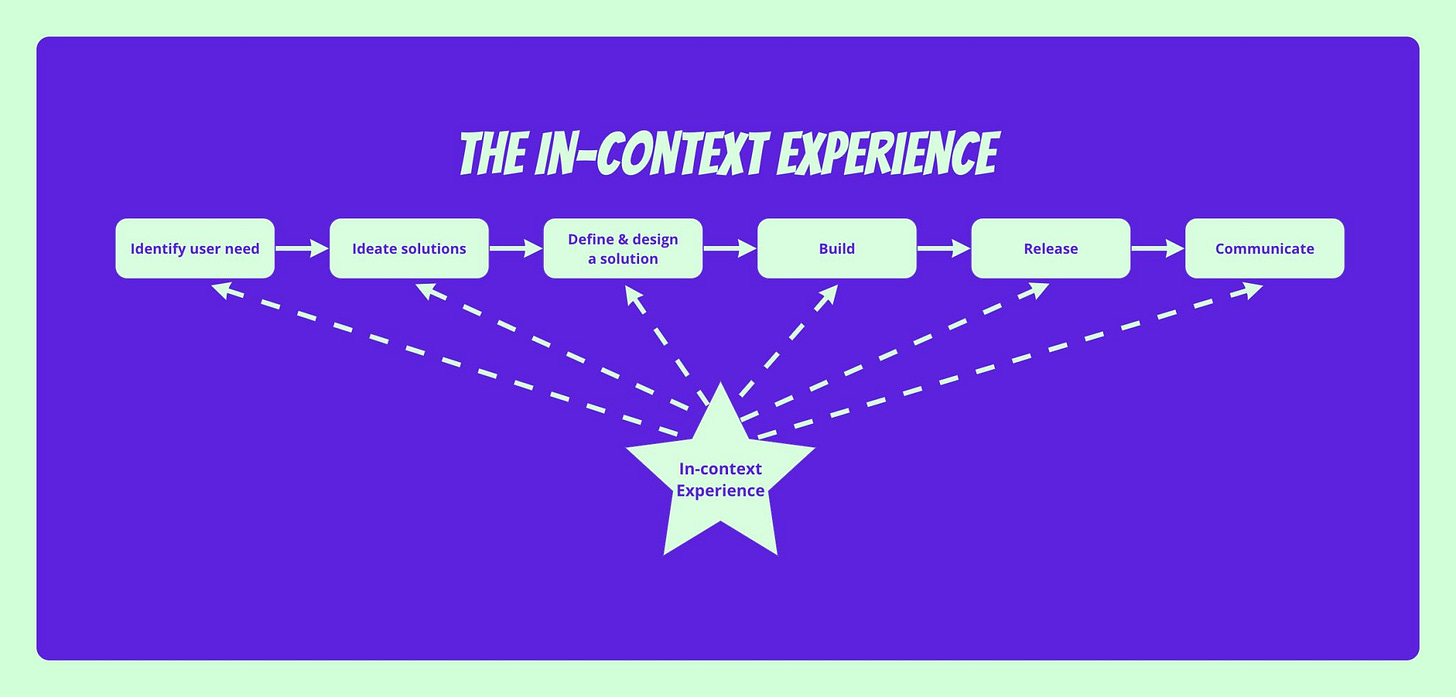You've planned, conceptualized, and designed a feature, coordinated its development, and launched it… only to find that the results are miles away from what you expected.
You've interviewed customers, analyzed user feedback, scoured the internet.
You understand their pain points, their needs, and their jobs-to-be-done.
You know your users like the back of your hand – but without context, you're playing a losing hand (pun intended).
The inevitable hectic routine
Product professionals (PMs, PMMs, PDs) have hectic routines, no doubt, which sidetracks us from keeping a focus on the vital end-to-end user journey .
↓
As a result, we focus narrowly on individual features and messaging (via emails/popups/landing pages…).
↓
We neglect to consider the full end-to-end user journey.
↓
We overlook the specific context in which users encounter the product and its features.
↓
User experience takes a hit
↓
KPIs fall short
In-context experiences
To deliver an in-context experience , ask yourself -
What has the user experienced before they discover the feature?
What challenges have they already faced?
What messages have they encountered/read?
How much time have they already invested?
Are they new users or well-retained veterans?
What are they trying to achieve right now?
Do they need your help or prefer to be left alone?
Failing to consider the full user journey will result in a fragmented, incomplete, and out-of-context experience.
A surprisingly simple solution
Most impactful solutions are not simple, but luckily this one is!
Go to miro.com (or any other whiteboarding software)
Map out the steps users take from start to finish
Include screenshots of each step
Share it with your teams
Done.
It gives you an overview of everything – zoom in, get into the details, or zoom out, and get a bird’s eye view.
It helps identify gaps and opportunities by identifying high-friction or unaddressed areas.
It encourages user empathy by viewing the world through users’ eyes.
And it enables better team alignment.
Bonus takeaways
All users were not created equal – different segments, experience different contexts. Make sure to address each context accordingly.
For PLG products, the user journey begins before the user even signs up; the first time users encounter the brand in any way
Make sure to revisit and update the user journey map every once in a while.
Getting other teams on board will help take the load off of you. Some of your colleagues will just thank you, but others will proactively ask to take an active part. I guarantee it.





